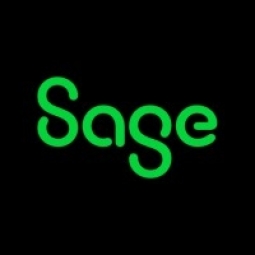公司规模
SME
地区
- America
国家
- United States
产品
- Sage 500 ERP
技术栈
- SAP Crystal Reports
实施规模
- Enterprise-wide Deployment
影响指标
- Cost Savings
- Productivity Improvements
技术
- 功能应用 - 企业资源规划系统 (ERP)
- 功能应用 - 库存管理系统
适用行业
- 零售
适用功能
- 销售与市场营销
- 仓库和库存管理
用例
- 库存管理
- 供应链可见性(SCV)
服务
- 系统集成
关于客户
Teva Sport Sandals 是一家在户外鞋类领域开创了自己独特优势的公司,专门面向活跃生活方式市场。该公司由 Mark Thatcher 于 1982 年创立,他凭借灵感和一点小聪明创造了第一款运动凉鞋。Thatcher 将凉鞋的精神与鞋子的灵魂融为一体,发明了混合款 Teva,并找到了一种创造数百万美元销售额的新方法。该公司位于亚利桑那州弗拉格斯塔夫,拥有 25 名员工。Teva 继续改进其产品线,以覆盖户外运动员的鞋类领域。目前,通过授权、目录销售和互联网提供 100 多种不同的鞋款。
挑战
Teva Sport Sandals 是一家在面向活跃生活方式市场的开放式鞋类领域开创了自己的利基市场的公司,当时正面临着直销分销渠道的指数级增长。这迫使该公司重新考虑其业务管理策略。自 1993 年以来,Sage 100 ERP 一直有效地跟踪目录销售。但随着电子商务的潜力即将显现,Teva 的需求发生了变化。具有可定制应用程序的超级数据库成为绝对必要。Teva 决定与赢家一起成长,并升级到 Sage 500 ERP。但必须确定这是最明智的举措。首席运营官 John Kalinich 领导了对竞争选项的彻底调查。他根据价格和性能选择了 Sage 500 ERP。
解决方案
Sage 500 ERP 现在负责处理 Teva 的所有目录和互联网交易。它管理在线、电话和邮件购买,保持库存信息更新,并汇编特许业务数据,这占 Teva 收入的大部分。当客户下订单时,系统会立即将数据传送到 Sage 500 ERP,避免任何手动输入或出错的可能性。客户可以立即知道商品是否有库存。信用卡在线批准,可立即输入到 Sage 500 ERP 系统中。运输和库存管理也通过 Sage 500 ERP 进行。Kalinich 的团队在 SAP® Crystal Reports 中为 Sage 500 ERP 编写了一个程序,用于为仓库创建定制的提货清单。当订单发出时,Sage 500 ERP 会从信用卡中扣款,进行现金收据过账,并生成发票以与客户订单一起插入。
运营影响
数量效益

Case Study missing?
Start adding your own!
Register with your work email and create a new case study profile for your business.
相关案例.

Case Study
Improving Production Line Efficiency with Ethernet Micro RTU Controller
Moxa was asked to provide a connectivity solution for one of the world's leading cosmetics companies. This multinational corporation, with retail presence in 130 countries, 23 global braches, and over 66,000 employees, sought to improve the efficiency of their production process by migrating from manual monitoring to an automatic productivity monitoring system. The production line was being monitored by ABB Real-TPI, a factory information system that offers data collection and analysis to improve plant efficiency. Due to software limitations, the customer needed an OPC server and a corresponding I/O solution to collect data from additional sensor devices for the Real-TPI system. The goal is to enable the factory information system to more thoroughly collect data from every corner of the production line. This will improve its ability to measure Overall Equipment Effectiveness (OEE) and translate into increased production efficiencies. System Requirements • Instant status updates while still consuming minimal bandwidth to relieve strain on limited factory networks • Interoperable with ABB Real-TPI • Small form factor appropriate for deployment where space is scarce • Remote software management and configuration to simplify operations

Case Study
Digital Retail Security Solutions
Sennco wanted to help its retail customers increase sales and profits by developing an innovative alarm system as opposed to conventional connected alarms that are permanently tethered to display products. These traditional security systems were cumbersome and intrusive to the customer shopping experience. Additionally, they provided no useful data or analytics.

Case Study
How Sirqul’s IoT Platform is Crafting Carrefour’s New In-Store Experiences
Carrefour Taiwan’s goal is to be completely digital by end of 2018. Out-dated manual methods for analysis and assumptions limited Carrefour’s ability to change the customer experience and were void of real-time decision-making capabilities. Rather than relying solely on sales data, assumptions, and disparate systems, Carrefour Taiwan’s CEO led an initiative to find a connected IoT solution that could give the team the ability to make real-time changes and more informed decisions. Prior to implementing, Carrefour struggled to address their conversion rates and did not have the proper insights into the customer decision-making process nor how to make an immediate impact without losing customer confidence.

Case Study
Ensures Cold Milk in Your Supermarket
As of 2014, AK-Centralen has over 1,500 Danish supermarkets equipped, and utilizes 16 operators, and is open 24 hours a day, 365 days a year. AK-Centralen needed the ability to monitor the cooling alarms from around the country, 24 hours a day, 365 days a year. Each and every time the door to a milk cooler or a freezer does not close properly, an alarm goes off on a computer screen in a control building in southwestern Odense. This type of alarm will go off approximately 140,000 times per year, equating to roughly 400 alarms in a 24-hour period. Should an alarm go off, then there is only a limited amount of time to act before dairy products or frozen pizza must be disposed of, and this type of waste can quickly start to cost a supermarket a great deal of money.

Case Study
Supermarket Energy Savings
The client had previously deployed a one-meter-per-store monitoring program. Given the manner in which energy consumption changes with external temperature, hour of the day, day of week and month of year, a single meter solution lacked the ability to detect the difference between a true problem and a changing store environment. Most importantly, a single meter solution could never identify root cause of energy consumption changes. This approach never reduced the number of truck-rolls or man-hours required to find and resolve issues.








